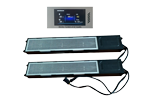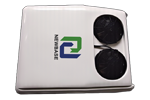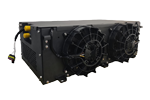Pioneering Battery Thermal Management Solutions for New Energy Vehicles (NEVs)
In the pursuit of energy conservation and emission reduction, the automotive industry is progressively transitioning away from internal combustion engines. New Energy Vehicles (NEVs), powered by renewable fuels, are emerging as viable alternatives to traditional fossil fuel-based vehicles. Lithium-ion Batteries (LIBs), celebrated for their high energy/power density, long cycle life, and environmental friendliness, are recognized as the most promising energy storage devices for NEVs, including Hybrid Electric Vehicles (HEVs) and Battery Electric Vehicles (BEVs).
The fundamental challenge in the commercialization of NEVs lies in energy storage. Developing suitable energy storage systems that meet high power and energy demands is crucial. To cater to these stringent requirements, LIBs are configured into modules and packs through serial/parallel connections. However, LIBs are known to be sensitive to pressure, vibration, and temperature, with temperature having a significant impact on their performance. Low temperatures can diminish power and energy output, while high temperatures can trigger complex side reactions, leading to thermal runaway (TR) in extreme cases. Uneven temperature distribution within the battery system results in varied electrochemical behaviors and cell imbalances, severely impacting the performance of NEVs.
Hence, the creation of a reliable and efficient Battery Thermal Management System (BTMS) is imperative to maintain battery temperatures within the prescribed range for NEVs. An ideal BTMS should regulate the battery pack to the optimal temperature while adding minimal weight and cost. Extensive research has been conducted on BTMS, categorized into active or passive, serial or parallel, heating or cooling, air-based, liquid-based, or Phase Change Material (PCM)-based systems, as well as hybrid strategies combining multiple methods. The design of a BTMS significantly influences the cost, heat transfer, energy management, battery health, and energy density of the battery system.
Looking ahead, the goal of enhancing charging speeds for quicker refills and longer ranges underscores the increased importance of BTMS. In this paper, we aim to provide design guidance for efficient BTMS implementations tailored for high-energy-density LIBs in NEVs. We first delve into the impact of temperature on individual cells and battery system performance, then highlight the advancements in air-cooling, liquid-cooling, and PCM-based cooling systems, summarizing their strengths and weaknesses in detail. Furthermore, we discuss the integration of BTMS with Vehicle Thermal Management (VTM) designs. Lastly, we explore the challenges and future prospects of BTMS with thermal runaway mitigation capabilities.
Lithium-ion batteries, as complex electrochemical energy storage systems, generate substantial heat during operation, particularly during high-rate charging and discharging. Studies have shown that, without any thermal management, an NMC battery can exceed 75°C at a 3C discharge rate when ambient temperature is 25°C. LIBs are highly sensitive to temperature and voltage. Figure 1a illustrates LIB behavior across different voltages and temperatures. The optimal operating temperature range for LIBs, as set by battery manufacturers, is 15-35°C. While higher temperatures enhance power output and capacity due to faster ion migration in electrolytes and electrode materials and accelerated electrochemical reactions, side reactions intensify, leading to rapid capacity fade and higher temperatures. If heat is not dissipated promptly, temperatures can escalate further. Decomposition of the Solid Electrolyte Interphase (SEI) and electrode materials, along with exacerbated side reactions, can pose fire hazards. Conversely, low temperatures can cause lithium plating, increase electrolyte viscosity, reduce lithium-ion conductivity, thereby decreasing available energy, increasing internal impedance, and impairing LIB rate capability, as depicted in Figures 1b and 1c. Lithium plating reacts with the electrolyte, causing capacity loss and gas emission during cycling. More critically, continued lithium dendrite growth may pierce the separator, leading to internal short circuits within LIBs. While micro-short circuits can cause self-discharge, major short circuits pose severe safety risks.
Therefore, ensuring LIBs operate within their "comfort zone" is paramount. Our cutting-edge BTMS solutions address these challenges head-on, offering robust, efficient, and innovative thermal management for NEVs. With a focus on enhancing performance, safety, and longevity, our BTMS designs are tailored to meet the unique demands of high-energy-density LIBs. Partner with us to pave the way for a greener, more sustainable future in automotive transportation.
Contact us today to learn more about our advanced BTMS solutions for NEVs!









.png)






